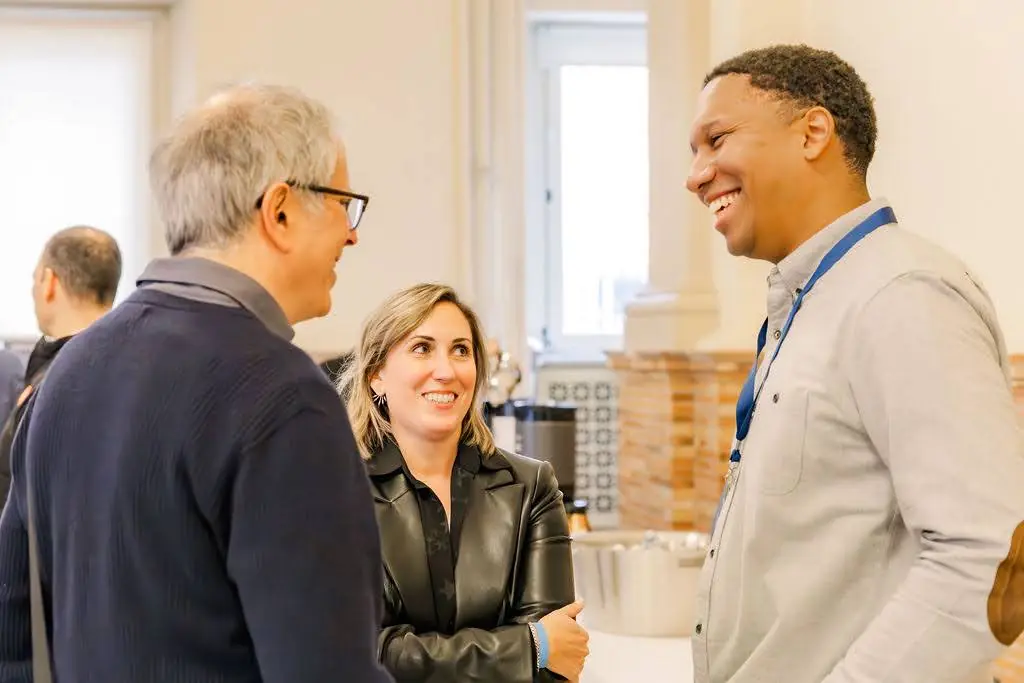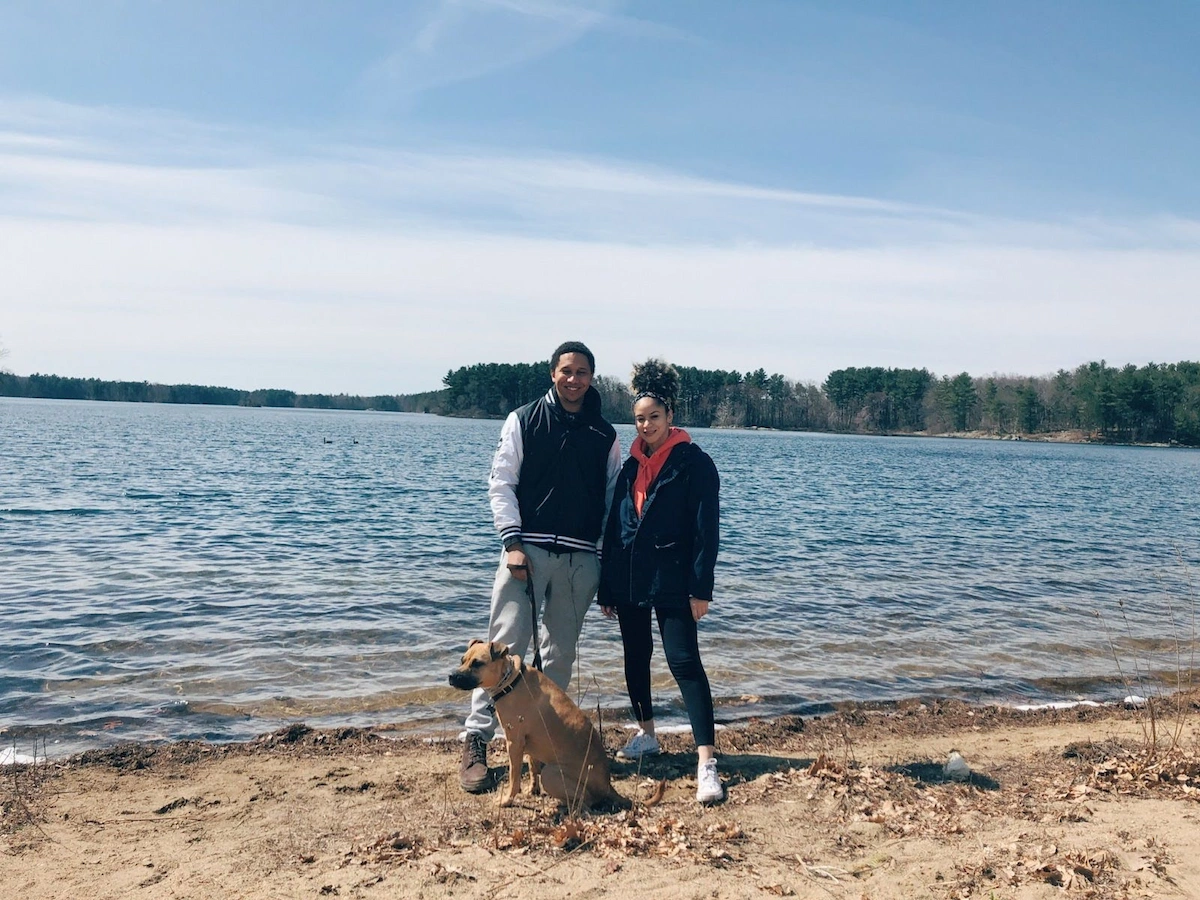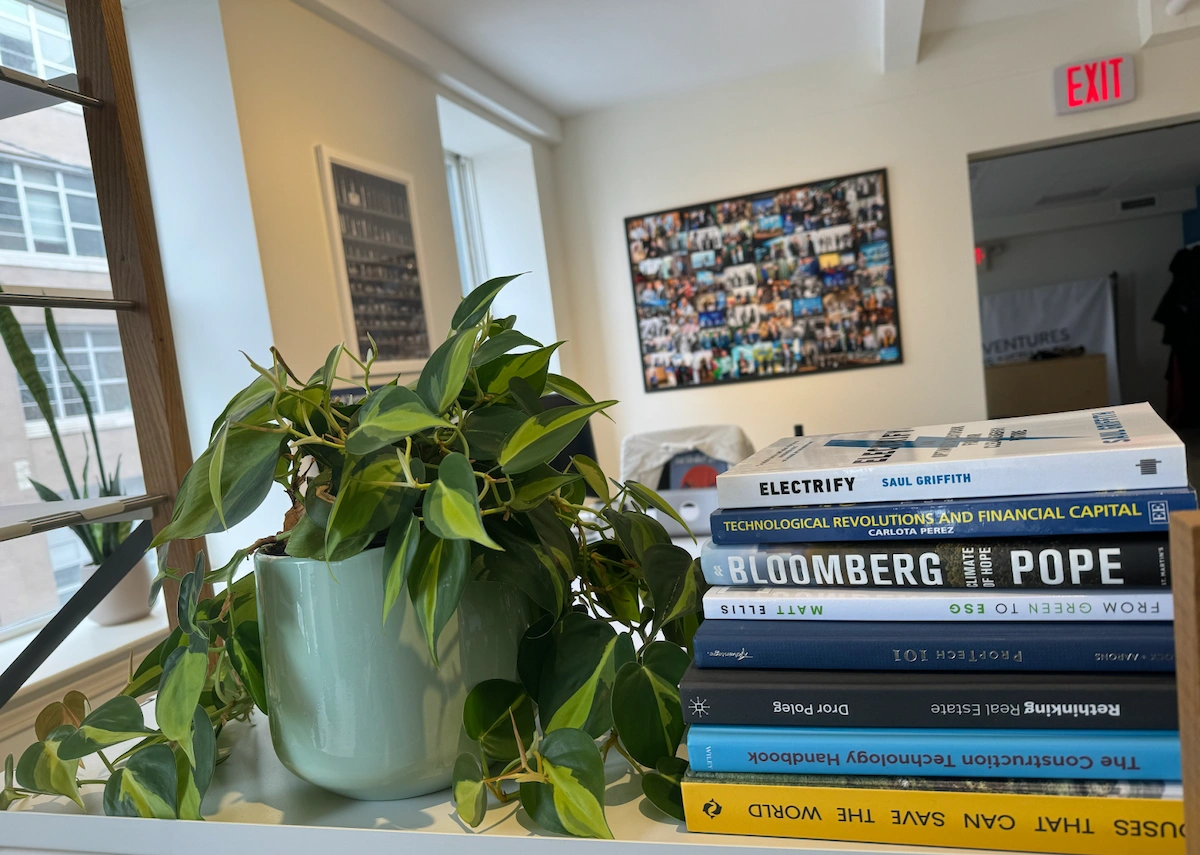We’re beginning the year with an exciting announcement: Lucas Turner-Owens has joined the Building Ventures team as principal.
At Building Ventures, we strongly believe that our built environment should enable healthy, fulfilling lives, and our buildings should ultimately add to our lived experiences. When we decided to add a principal to the team, we wanted to work with someone who shared this belief, as well as our sense of purpose and commitment to our mission. This isn’t always the easiest attribute to reliably screen for in a venture interview process. Luckily though, one of our brilliant founders was the perfect conduit. When Canoa Founder & CEO Fed Negro suggested that, while I was visiting NYC, I might reconnect with another investor he highly respected (who just happened to want to relocate Boston), I immediately arranged that coffee meet up. It was quickly apparent that Lucas’s experience investing in sustainable solutions like Canoa was a match with BV’s core focus, and his ongoing commitment to realizing a better built world would make him a perfect addition to the team.
On that note, I could keep sharing more about why we’re excited about our newest team member and what we’ll be tackling together soon, but the purpose of this post is to introduce Lucas to our community. We want you to hear from Lucas himself, so I asked Lucas about his passion for sustainability, his experience in venture, his move back home to the Boston area, and more. We’re thrilled he’s joined us to work #ForABetterBuiltWorld.
What made you want to join the team at Building Ventures?
I first met you and Travis at a board meeting for Canoa. While on the team at TMV, my previous venture firm, I championed an investment in Canoa in 2020. Canoa, of course, is also a Building Ventures portfolio company. During the first board meeting I attended, I left impressed with how you and Travis showed up. I found you both to be true thought partners to the founders and the board, as well as coaches for your portfolio company.

Lucas Turner-Owens, left, with Heather Widman and friend of BV Jim Rosen at the BVIN Fall Summit 2023.
Separately, I have had a longstanding passion for sustainability. I spent a summer volunteering for a local environmental justice organization in Boston during my high school years, and my interest continued throughout my career. During my MBA program, I earned an additional certificate in sustainable business. In the three years I spent working with TMV, I found that I kept returning to companies solving for sustainability. And I knew through working with Canoa that the built world—construction and real estate—has the largest impact on greenhouse gas emissions of any industry.
In thinking about the next step in my career, I began to reach out to people in my network who I respected, and it was actually Fed Negro of Canoa who suggested that I speak with you, Heather. Through initial conversations I had with you, and then Travis, Jesse, and Allen, I knew my first impression of Building Ventures was spot on. Through those interactions, I observed your team’s thoughtfulness, commitment to mission, and detailed execution, and I’m excited to work with you all.
What motivates you to work on improving our built environment now?
I’m motivated by the time-sensitive opportunity that we have to reach net zero by 2050. We’ve all witnessed severe flooding throughout the US, as temperatures change and the number of storms increases. And globally, each year we’ve seen new record highs for temperatures, and too many of us have unfortunately experienced the impact in cities that were designed before climate change and now struggle to adapt and stay livable in our current environment conditions.
The impact in cities is becoming even more important, as trends towards urbanization are continuing. By 2050, we’ll have an additional 2.5 billion people living in cities around the globe, which will necessitate the construction of some 13,000 new buildings a day. So, we have a singular opportunity right now to both retrofit our existing built environment and to build better new structures. I think technology will make that massive task achievable, and I want to commit my career to working on that problem.
I’ve cared about sustainability and urban design for a long time—volunteering around environmental justice issues and equitable cities since I was a teenager. But I have felt a much more pressing sense of urgency in the last few years due to viscerally experiencing the effects of climate change. When the Canadian wildfires left the Northeast covered in smoke last year, I can vividly recall moving through New York afraid to breathe the air outside and an ochre-colored sky that looked like a scene from Mad Max. I have spent my career up to this point investing in a range of social and environmental impact causes, but that moment put climate change into stark relief for me.
With this urgent directive, I’m eager to connect cutting edge founders and technological innovation with the stakeholders who develop, own, and operate the built environment to enable that transition to a better built world—in other words, I’m eager to join you and the rest of the team working towards the Building Ventures mission.
Before working as an investor, you had experience in construction. What initially attracted you to working in construction, and how does that shape the way you view construction innovation now?
I was attracted to work in construction because both my parents were involved in real estate in a hands-on way. My father owned a number of residential properties and renovated them himself. I grew up with a paint scraper in hand often prepping and painting walls while he hung drywall and did more structural work. And my mother was a landlord, who managed the two rental properties in the three-family triple decker where we lived.
A little over 15 years ago, I worked for a general contractor for some of the summers between high school and college as a field engineer. I’m grateful for that time spent working in the field because it gave me an appreciation for how problems get solved on the ground. As part of my remit, I would do everything from “shooting grade” on concrete pours to measuring the vibrations in the walls at the Boston Museum of Fine Art during the west wing expansion that our team built for the museum.
My time spent on the jobsite and in the trailer with the project management team taught me how problems get solved on the ground. I witnessed the workflow of GCs and subcontractors and the many timelines and priorities they juggle each day. Even though this experience was early in my career, it was formative. I believe that exposure informs how I evaluate solutions in #constructiontech and #proptech more broadly.
Our mission here at Building Ventures is to create a better built world. What does that look like, in your opinion?
In my opinion, a better built world is one that is optimized, sustainable, safe, healthy, and affordable. This could mean using technology to unlock new ways of tracking a jobsite, or the energy usage of a building, or the health and safety of its occupants. But no matter where you locate that specific solution, I think a hallmark of any innovation leading to a better built world will be that it improves outcomes for all stakeholders.
For example, as I saw on multiple job sites, a tool for tracking labor and projects needs to provide valuable analytics to the GC but not at the expense of being onerous for laborers working onsite. Because if it is, no one will use it, and there won’t be any data to report. This is just one example, but in the venn diagram of real estate’s stakeholders, I believe solutions for a better built world can be found in the interstitial space where there are better outcomes for occupants, property owners, developers, and real estate investors.
You’ve recently moved from New York City to join Building Ventures in our Boston headquarters, but you’re not new to the area.
That’s right! I’m back home. I was born and raised in Cambridge, MA, in a neighborhood called Cambridgeport. After attending undergrad at Wesleyan University, I moved to Washington, D.C., to work for a nonprofit whose CEO was an economic advisor to the Obama administration. I returned to Boston briefly before heading back to D.C. for graduate school, and then most recently spent the last few years working in venture in New York City. And now, 13 years since I first left, I’m happy to say I’m back in that same neighborhood with my wife and our dog, Sage.

Lucas with his wife, Camila, and the newest addition to our #bv_hounds channel, Sage, at the Middlesex Fells
It’s great to be back home with family and friends, and I’m also excited to be joining the VC ecosystem in Boston again. I find our innovation ecosystem and our close-knit community to be real differentiating strengths of the Boston VC community. I believe our universities, accelerators, and incubators in the state will be where the technology that greens the built world is born. And, as a point of pride, I hope to see us gradually reclaim our title as the second largest VC market outside of Silicon Valley—a title New York quietly stole.
And to come back at a point in time when the Celtics are so dominant is an added plus.
What’s the best book you’ve read during onboarding?
I’m grateful to you and the rest of the BV team for sending me so many great reads as I onboarded. Dror Poleg’s Rethinking Real Estate was the first book that I read, and I know that’s a particular favorite of yours, Heather. After making my way through the seven excellent built environment-related titles, it ended up being my favorite because of the macro view of the industry it offered me. In Rethinking Real Estate, Poleg begins by talking about real estate as “an excuse to study how people live and behave,” which immediately appealed to me and the sociologist hat I wore during undergrad. From there, the book goes on to situate real estate in all its forms against the backdrop of the broader financial market and analyze how different stakeholders interact with real estate as an asset class. Rethinking Real Estate gave me the view of the whole “chessboard,” so to speak, and I’m grateful for that perspective.
This was the best book, but I want to go on record that the whole stack of onboarding reading was not only informative, but also motivating. It was great to see the number of books on climate change and sustainability that showed the difference that innovation and technology can make in construction and real estate.

Lucas’s onboarding TBR.
What are you most excited about getting started on?
I’m most excited about getting started on finding great companies to add to our portfolio. We are halfway through the deployment of Fund II right now, so I’m excited to contribute to our portfolio and find founders who are solving for a better built world. If you’re a founder looking to get in touch, tell us more about what you’re building here. And if you’re interested in connecting, find me on LinkedIn.


